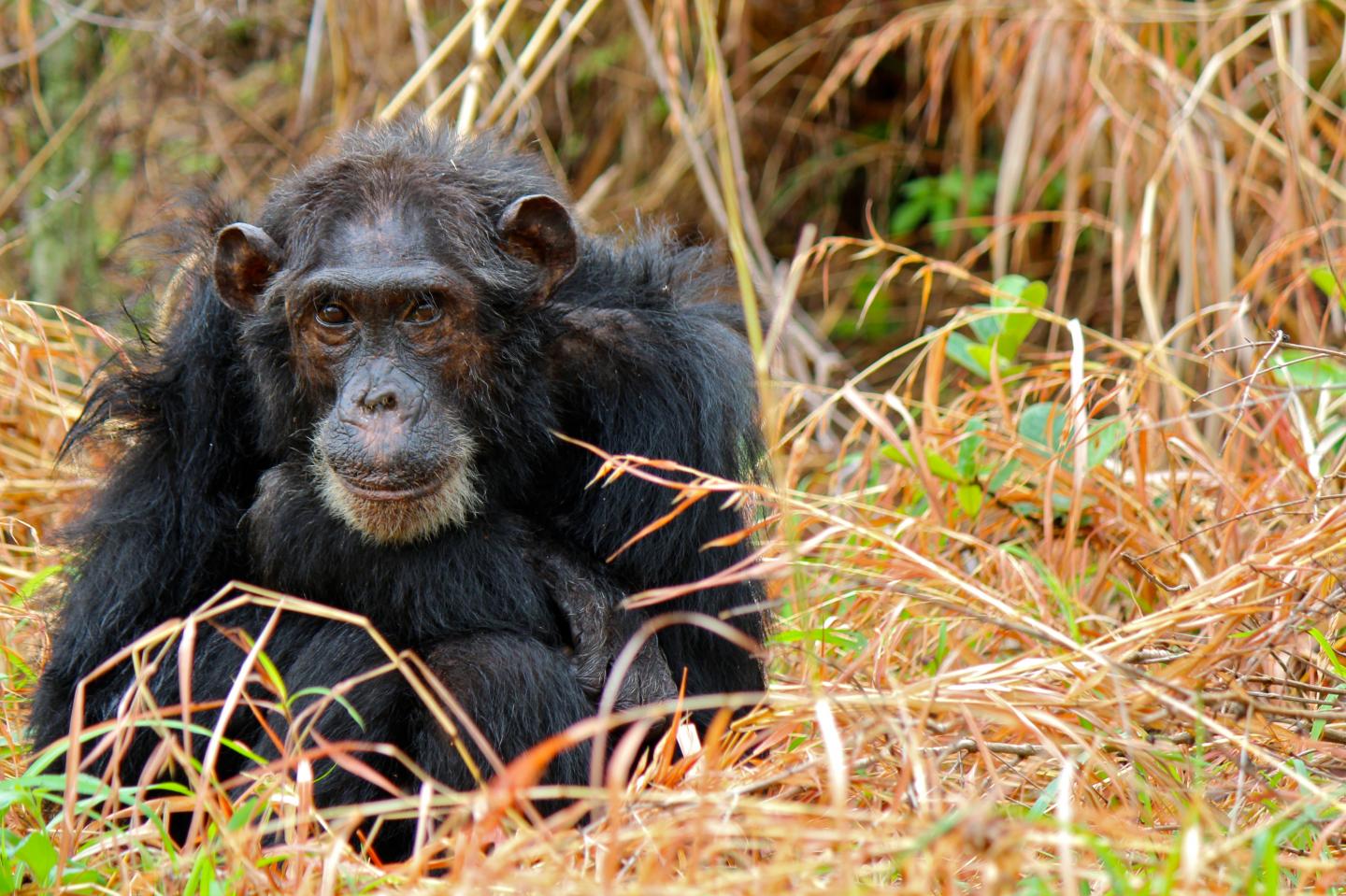
Credit: Kara Walker
Two sniffling chimps could be one too many for a wild chimpanzee community susceptible to respiratory disease outbreaks, report Morris Animal Foundation-funded researchers at the University of Minnesota. The team’s findings were a result of their development of a syndromic surveillance system to noninvasively and preemptively detect a potential outbreak of respiratory disease. The study recently was published in EcoHealth.
“This could significantly improve our ability to intervene and slow down, or even stop, outbreaks among great ape groups,” said Dr. Tiffany Wolf, Assistant Professor in the College of Veterinary Medicine, University of Minnesota. “Hopefully, we can use this technique to better understand disease transmission among wildlife around the world.”
Respiratory diseases are increasingly recognized as having a significant impact on great ape populations that have at least some level of contact with humans. In Gombe, respiratory disease is responsible for, or has been associated with, more than 50 percent of mortalities in chimpanzees.
Syndromic surveillance is a type of surveillance that can detect a health issue before a disease is diagnosed, or even before a specific pathogen is known to be involved. It uses easily identifiable indicators that do not require physical contact with an individual or a population.
“Syndromic surveillance is a relatively new approach in wildlife care and has great potential to help us head diseases off at the pass,” said Dr. Janet Patterson-Kane, Morris Animal Foundation Chief Scientific Officer. “We are proud to support projects like this that could facilitate early interventions for small populations put at risk by emerging infectious diseases.”
For their study, funded in part by Morris Animal Foundation, Dr. Wolf and her team analyzed data from researchers who studied two chimpanzee communities at Tanzania’s Gombe National Park, from 2004 to 2012. One community had about 25 individuals, while the other had between 50 and 60. The researchers primarily watched the chimps’ behaviors, but also noted different symptoms of respiratory disease, such as coughing, sneezing and runny noses. Dr. Wolf’s analysis of data detected 14 outbreaks from 2005 to 2012, eight of which were previously unrecorded.
The team first used this information to establish a baseline normal level of respiratory disease. They examined the frequency of respiratory symptoms over times when outbreaks didn’t occur to establish a threshold that, if crossed, could alert observers that an outbreak could occur. Dr. Wolf then developed an agent-based computer model that simulated respiratory disease transmission under various conditions. This allowed the researchers to determine how effective the surveillance system was in detecting outbreaks of different sizes and at different times of the year.
The study showed that if even two chimpanzees are observed with signs of respiratory disease over a period of one week, the community could be on the verge of an outbreak. Once alerted, local wildlife caretakers could then collect noninvasive diagnostic samples, such as fecal matter or chewed up fruit, to try and detect pathogens, including bacteria or viruses. If deemed necessary and possible, veterinary professionals could then intervene.
With a worldwide population estimated to be between 170,000 and 300,000 individuals, chimpanzees are classified as endangered on the International Union for Conservation of Nature Red List of Threatened Species. Improving disease outbreak detection is critical to help wildlife professionals manage remaining populations and improve the chances not only for survival, but species recovery.
###
Morris Animal Foundation funding for this study is sponsored in part by Zoetis Inc.
About Morris Animal Foundation
Morris Animal Foundation’s mission is to bridge science and resources to advance the health of animals. Founded by a veterinarian in 1948, we fund and conduct critical health studies for the benefit of all animals. Learn more at morrisanimalfoundation.org.
Media Contact
Sean Andersen-Vie
[email protected]
Original Source
https:/
Related Journal Article
http://dx.




